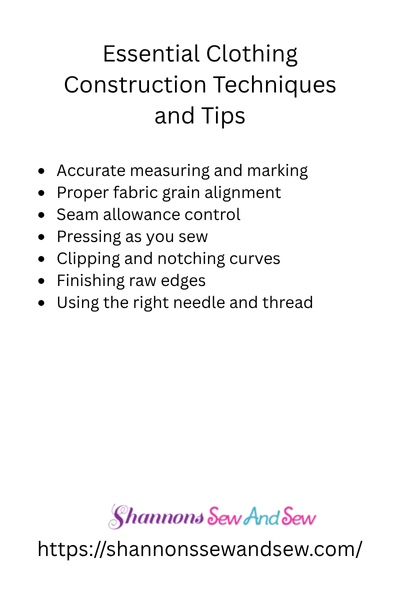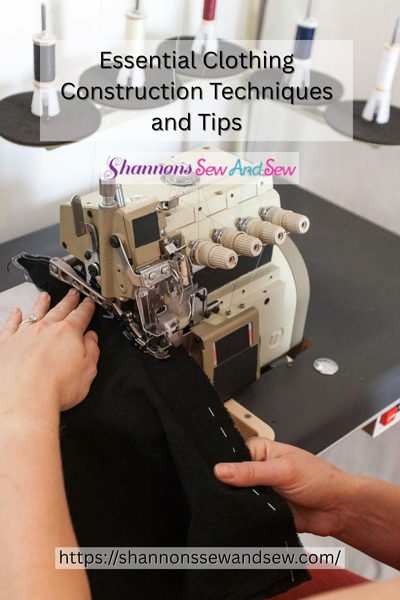Sewing Projects
How to Sew a Professional-Looking Hem on Garments
If you’ve ever wrestled with a curling fabric edge and wondered how to sew a professional-looking hem on garments, you’re definitely not alone.
I remember one of my first sewing projects—a button-down shirt. The top half turned out decent, but the hem? Let’s just say it looked like I stitched it during a bumpy bus ride. Not exactly the polished finish I had in mind. But hey, it taught me one big thing: mastering hems makes all the difference. It’s that final touch that takes your piece from “homemade” to “hey, where’d you buy that?”
Let’s talk about how to do just that—minus the stress.
Read More About How to Sew a Professional-Looking Hem on Garments

Start With the Right Tools (Trust Me, It Matters)
You don’t need a fancy machine or a room full of gadgets, but there are a few things that’ll make sewing a professional-looking hem way easier. A good iron is your secret weapon. Seriously, if you’re not pressing your hems, you’re working way harder than you need to.
Also: sharp pins, a hem gauge (or a ruler if you’re winging it), and matching thread. Oh—and fabric scissors. Not the ones you use for opening Amazon boxes. I mean sharp, glorious scissors meant for fabric only.
More Things to Know About How to Sew a Professional-Looking Hem on Garments

Let’s Talk Fabric—Because It’s a Diva Sometimes
Different fabrics behave, well… differently. If you’re hemming jeans or heavy cotton, it’s going to feel like you’re wrestling denim alligators. Lightweight silks and chiffons, on the other hand? Those things slip around like they’ve got somewhere better to be.
So here’s the trick: test your hem on a scrap piece first. Just a few inches. It’ll give you a feel for how your machine handles the fabric, whether the thread tension’s right, and if your stitches are playing nice.
Fold, Press, Repeat
When I first learned how to sew a professional-looking hem on garments, I didn’t realize how much of it was just folding and pressing. For a clean look, I usually go with the double-fold hem: fold it once, press, fold it again, press again. That way, you hide the raw edge and get a neat finish.
Some folks skip the pressing step and just try to fold as they sew, but unless you enjoy yelling at your machine, I don’t recommend that. Taking the extra time to press makes the sewing part so much smoother.
Stitch Like You Mean It
Okay, you’re all pressed and pinned. Now it’s time to sew that hem like you mean it. A straight stitch works for most fabrics. I like to sew about ⅛” from the inner folded edge so everything stays crisp.
Here’s a trick I wish someone told me sooner: go slow. I know, it’s tempting to zoom through it once you’re on a roll, but taking your time keeps the line neat—and you’ll end up with a hem that looks legit.
And if you mess up? No biggie. That’s what seam rippers are for. (Just keep one handy—like a good friend who’s there when things fall apart.)
Invisible Hem, Anyone?
If you’re working on dress pants or something where you really don’t want visible stitching, you can learn how to sew a professional-looking hem on garments using an invisible hem stitch. Most machines have a blind hem foot, and once you get the hang of it, it’s a game changer.
I was totally intimidated by it at first—thought it was some kind of sewing wizardry. But after a few test runs on scrap fabric, it actually clicked. And let me tell you, the result? Chef’s kiss.
Quick Fixes for Common Hemming Woes
So your fabric’s puckering? That usually means your tension’s off or the thread’s too tight. Lower it a bit and test again. Hem’s crooked? Been there. That’s what chalk or a washable marker is for—draw your hemline before folding.
And if your hem keeps flipping up after washing, toss it back under the iron and give it a steam press. It’s like telling your fabric, “Hey, behave.”
Why Bother With All This?
Because, let’s be honest, when you learn how to sew a professional-looking hem on garments, everything else you make instantly looks better. It’s like polishing your shoes—it might seem like a small detail, but people notice.
Plus, there’s something super satisfying about flipping a shirt or pair of pants inside out and seeing a clean, even hem. It says, “I made this. And I nailed it.”
What a Clean Hemline Says About Your Sewing
Whether you’re hemming a pair of pants for work, fixing your kid’s costume, or crafting your next masterpiece, knowing how to sew a professional-looking hem on garments is one of those skills that pays off again and again.
It doesn’t have to be complicated, either. With the right tools, a bit of patience, and some trial and error (okay, lots of trial and error in my case), you’ll get there.
So go grab that half-finished project, heat up your iron, and give your hems the attention they deserve. You’ve got this—and your clothes will thank you.




















